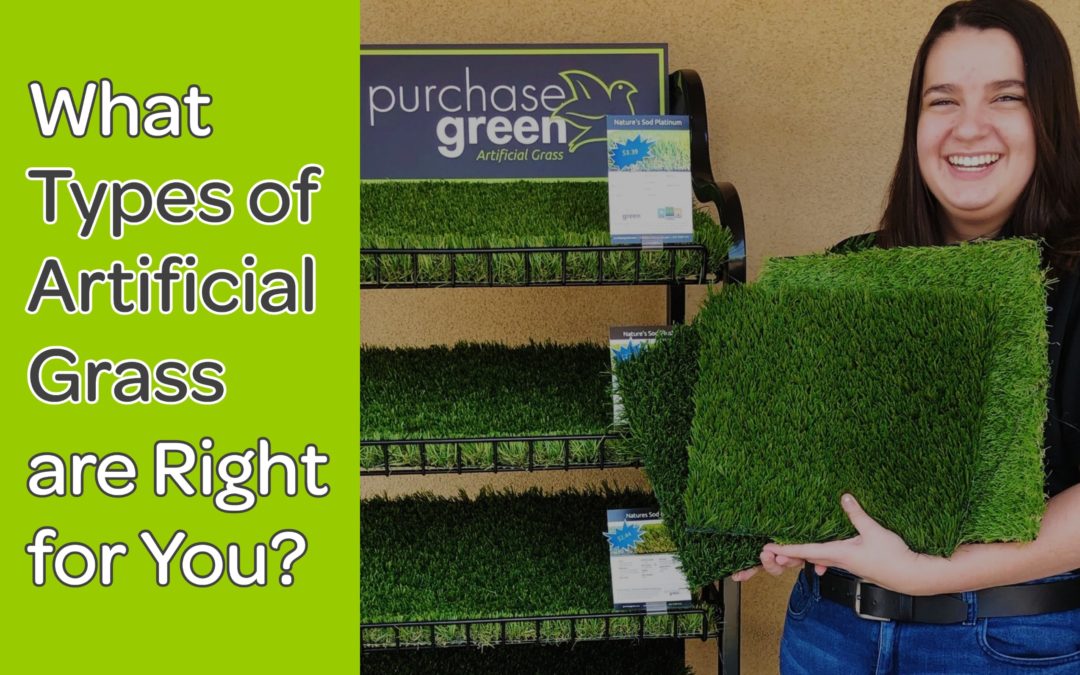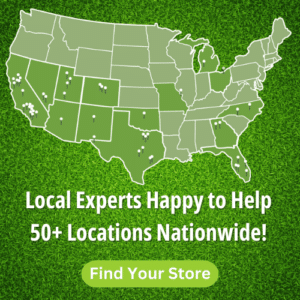Synthetic turf manufacturing has come a long way in recent years, bringing to the market a plethora of new artificial grass styles. And some might say too many. But comparing various types of artificial grass and finding the right one for you need not be a guessing game.
When weighing options, shoppers typically prioritize either function or aesthetics. So, in this blog, we’re covering the three synthetic turf specifications that impact function and aesthetics the most: blade shape, blade color, and blade pile height. By the end, you should have a much clearer idea of the types of artificial grass that are right for you.
First, Know Your Needs Before You Buy
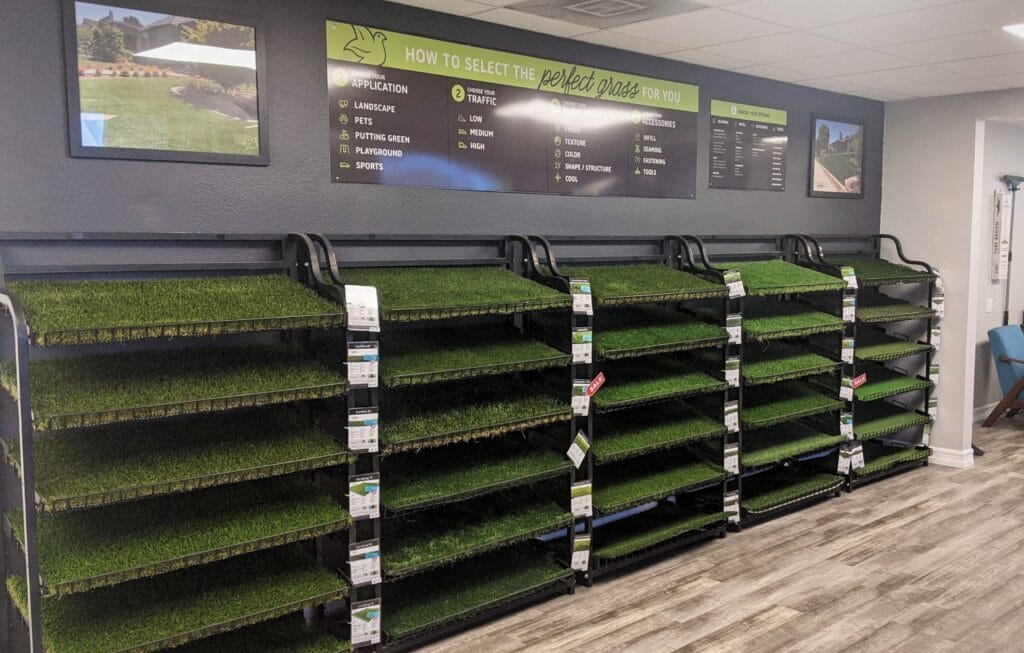
If you were to ask any Purchase Green team member which synthetic turf is the best, 100% of the time the conversation will begin with a series of probing, clarifying questions to better understand your needs first. Because the truth is, there is rarely one product that satisfies every person’s preference.
For example, we’ll begin by asking where you’re installing the turf. Generally, the type of application – such as a playground, pet run, or putting green – will quickly narrow down your initial options. Then, there will be an investigation into how active you plan to be on the turf, how much of the turf will be exposed to full sun, which hue of green is native to your region, or even the number and size of dogs that might be on the turf.
In short, know your needs before you buy. Is your priority performance or style? Those that need high-performing grass might look more closely at the combination of blade shape and pile height. Others that care more about the artificial grass’ appearance may pay closer attention to blade color, as well as pile height.
Blade Shape
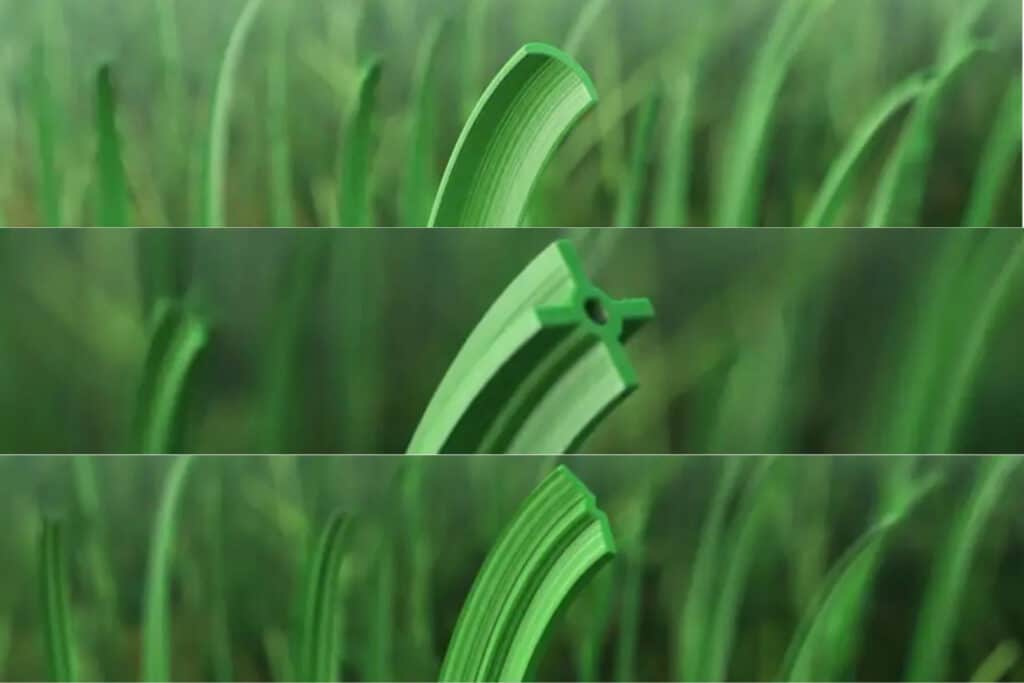
The relevance of blade shape might surprise you. Depending on its structure, an artificial grass’ blade shape can tell you much about that product’s longevity under certain conditions.
There are multiple types of artificial grass blade shapes currently on the market – including, but not limited to V-shaped, U-shaped, W-shaped, C-shaped, Flat, Hollow, Diamond, and Willow (Willow yarns are newer to the industry, we’ll talk more about them in a moment). The blade shape is important to consider for areas that anticipate regular activity, as blade shape directly impacts blade memory – the ability for the turf to return to its original shape after being compressed from foot traffic.
Characteristically, blades with angles and curves (V, W, U, S) provide greater structural support and better memory. Whereas blades that are flat, for example, do not give the same support and are better suited for applications with little to no traffic.
Blade shape will also moderately impact the texture and feel of a finished product, as well as the level of temperature control it gives. For example, V-shaped blades are known for producing some of the most rigid-feeling artificial grasses, but they will also help keep turf cooler to the touch by redirecting UV rays away from the thatch.
Newer to the industry are Willow yarns. These blades have a unique manufacturing process that creates their “non-directional” appearance. The benefits of Willow blades are that they easily camouflage seams and traffic patterns – making these grasses preferred by contractors and excellent for high-traffic areas.
Blade Color
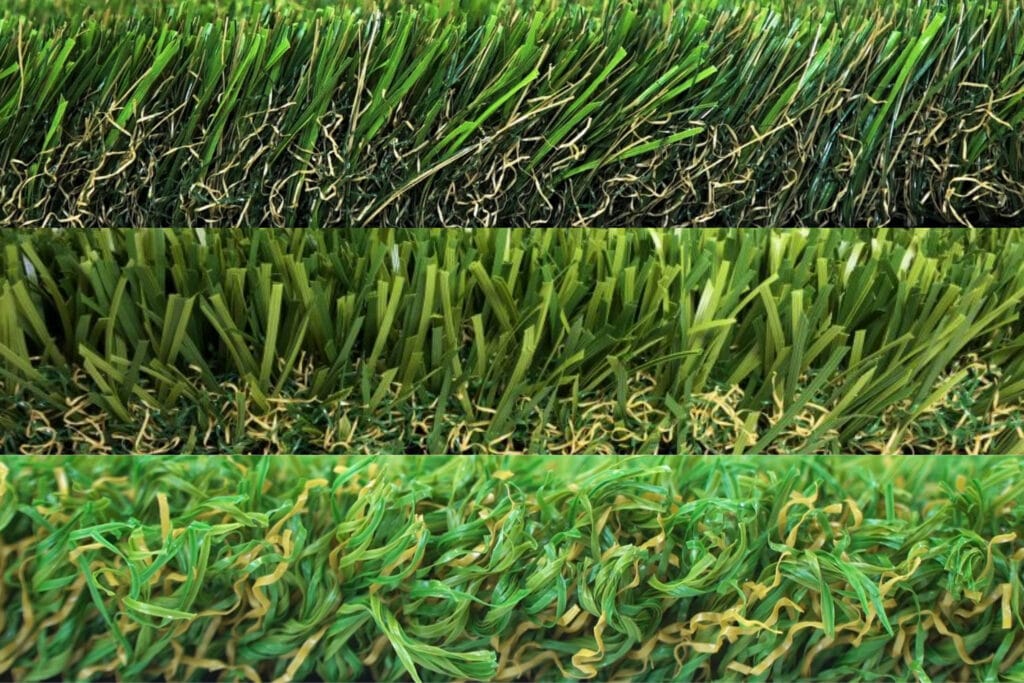
Artificial grasses come in an array of colors – Olive green, Spring green, Apple green, Field green, and more. Sometimes grasses will even have a combination of up to four colors. Thatch, the short, curled fibers in artificial grass, will also vary in color. Thatch can be a combination of dark brown, tan, and green, or only green. If an artificial grass’ style and aesthetic are the priority, you might choose to focus on the product’s blade color.
If your color preference is not clear to you, you could begin with comparing turf samples to neighboring yards, if you prefer to match with the sod that is native to your region. Additionally, landscape designers have recommended picking a color of grass that contrasts the property. Veer Singh, owner of Steve’s Landscaping, has had great success in pairing Spring or Apple green turf colors with property designs that have darker tones. Conversely, properties with lighter tones have paired nicely with an Olive or Forest green turf.
It is also important to mention that blade color is a factor for heat retention. Darker greens will attract and trap more heat from the sun, whereas lighter greens tend to remain cooler.
Blade Pile Height
An artificial grass’ pile height – the length of the blades – will play an important role in both performance and style. With regard to style, it’s quite simple: some prefer a shorter look, while others don’t. If you are of the opinion that shorter turf styles appear more realistic, you might want to shop for pile heights between 1.2 inches to 1.6 inches. On the other hand, if you like taller styles, look for grasses that are 1.8 inches and taller.
With regard to performance, the types of artificial grass that have taller pile heights tend to show traffic patterns more over time, and are not always best for high-traffic applications. Pile heights 1.6 inches and below are often recommended for active areas.
What Types of Artificial Grass are Right for You?
Walking into a showroom with dozens of grasses in front of you can feel overwhelming if you’re not sure what it is you’re looking for. But by breaking down these key manufacturing specifications, we hope the product selection process has been made simpler.
And of course, never hesitate to learn even more from a Purchase Green product expert – we’re happy to chat online, over the phone, via email, or at any of our retail locations!
You Might Also Like:
Modern Landscape Design with Synthetic Turf: Designers Talk Shop and Share TipsHow to Shop Synthetic Turf for PetsDoes Artificial Grass Kill or Encourage Bacterial Growth
